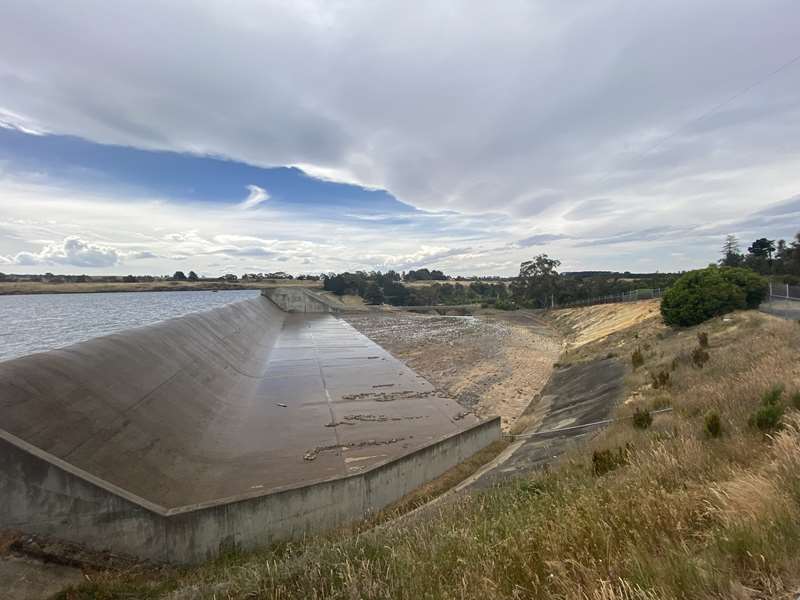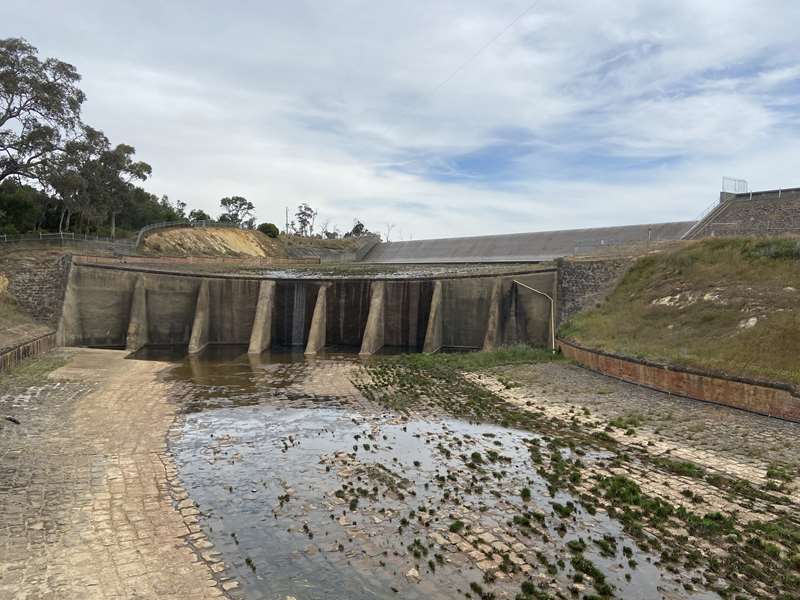Kyneton - Upper Coliban Reservoir


Constructed in 1903 and enlarged in 1917 this dam originally featured the only siphonic spillway in Victoria. The reservoir is surrounded by scenic farmland and is a domestic water storage reservoir.
The reservoir is stocked annually with brown trout and redfin. The fishing is best when the reservoir is low. Being the uppermost of the three Coliban storages, it is usually the first drawn down in periods of high demand.
Bank fishing as well as fishing from kayaks, canoes and small portable craft (car toppers) with electric motors is permitted. People can fish using flies, baits or lures. Swimming is not permitted.
See the Coliban Water page for details on access points for kayaks, canoes and small portable craft.
At the first car park you come to there are toilets and two unshaded tables. There is an interesting viewpoint over the spillway. There is also a point for water craft entry here.
There is a short walk to the other car park beside the spillway. It's fun to watch the water trickling down multiple drops to eventually reach the river below. The second car park has a big shelter with a long table / seat. A track leads down to the river where you can fish or just explore.

HISTORY
The Federation drought of 1901 was the driving force behind the expansion of the Coliban Water System, Joseph Brady's original plan of a second storage higher up the Coliban River, was adopted. This became the Upper Coliban Reservoir, completed in 1903.
A 'DAM' FINE BRIDGE
While you are here, take time to admire the spillway bridge. It was designed by Australian engineer, Sir John Monash, a WWI officer of high regard and later the head of the then State Electricity Commission.
The bridge is a Monier arch bridge, a construction style that uses iron-reinforced concrete. To build a Monier bridge, a timber framework is first constructed to support the iron frame. Once the iron is in place, concrete is poured into the form and left to harden. The timber framework is then removed.
NOT DROUGHT PROOF
The Upper Coliban Reservoir was a significant step in the Coliban Water System. With additions to the embankments and spillways, the last being in 1994, it has grown in capacity to 37,770 megalitres. It is however, not drought-proof, and tends to be drained earlier in times of water shortage. May 2008 saw the storage almost completely emptied!
LIQUID GOLD
The lure of gold in the 1850s saw the biggest gold rush this country has ever seen. In the north of the state, thousands crowded Bendigo Creek, panning for gold and polluting the creek. The same water was used for drinking, cooking and washing. It wasn't long before the creek was choked with sludge. A reliable, clean water supply had to be found - and fast!
JOSEPH BRADY (1828-1908), CIVIL ENGINEER
The job of planning Bendigo's first water scheme was given to Irish civil engineer, Joseph Brady.
Brady estimated eight small reservoirs would be needed to service Bendigo - six for mining and two for domestic supply.
The first reservoir was built at Bendigo's Golden Square in 1859. Investors had hoped to pay for it with gold mined at the site. Unfortunately, there was so little alluvial gold left, and the water was so polluted, that this reservoir was soon abandoned.
The No. 7 Reservoir, built at Big Hill in 1861, was more successful. Finally, Bendigo had water - but not enough! So, Brady looked south, to the Coliban River, and proposed another enterprising solution.
COLIBAN RIVER SOLUTION
Joseph Brady's proposal was simple, but ambitious.
A large earthen dam would be built across the Coliban River, just upstream from Malmsbury. Water from the reservoir would be diverted along a gravity-fed channel to the thirsty gold towns of Castlemaine and Bendigo.
Brady's system included 70 kilometres of open water channels, aqueducts, syphons and tunnels. It was an expensive scheme and the government was reluctant to build it, however, minds were changed with the great drought of 1865.
Work on the Malmsbury Reservoir began, and by 1874, water flowed to Castlemaine. Three years later, in November 1877, Bendigo finally had a reliable water supply.
Access for Dogs:
Dogs are permitted on lead.
Photos:
Location
Kyneton-Springhill Road, Kyneton 3444 Map
Web Links
→ coliban.com.au/upper-coliban-reservoir
→ Coliban Reservoir (FishingMad)











